 W
WHans Wilhelm Auer was a Swiss-Austrian architect best known for his design of the Swiss Bundeshaus (1894–1902) in Bern.
 W
WSaint Marguerite Bays was a Swiss seamstress and Roman Catholic mystic who was a member of the Secular Franciscan Order. She lived a simple life as a Franciscan and adapted the tenets of the order's charism into her own life and social apostolate, especially after she was cured of bowel cancer on 8 December 1854. Pope John Paul II beatified her in 1995 after the recognition of a miracle attributed to her intercession. She was canonized by Pope Francis on October 13, 2019.
 W
WMaria Josefa Karolina Brader - in religious Maria Caridad of the Holy Spirit - was a Swiss Roman Catholic religious sister who founded the Franciscan Sisters of Mary Immaculate. Brader served as a member of the missions in Ecuador for a brief period of time before being transferred to Colombia where she served as a catechist and evangelizer for the remainder of her life.
 W
WKarl Joseph/Ioseph Brodtmann was an accomplished Swiss artist and lithographer, as well as a printmaker, publisher and bookseller who worked in Zurich and Schaffhausen.
 W
WKarl Rudolf Graf von Buol-Schauenstein was Bishop of Chur (1794–1824), then of Chur-St. Gallen (1824-1833). He had also been the last prince-bishop of the Prince-Bishopric of Chur until the ecclesiastical principality was secularized in 1803 in the course of the German mediatization.
 W
WJean-André Deluc or de Luc was a Swiss geologist, natural philosopher and meteorologist. He also devised measuring instruments.
 W
WAnna Eynard-Lullin, was a Swiss philanthropist, born a citizen of Republic of Geneva. She was married to the politician Jean-Gabriel Eynard and was known to have indirectly influenced the Treaty of Paris (1814), Congress of Vienna and the Congress of Aix-la-Chapelle (1818). In Switzerland, she was known for her charitable projects.
 W
WThe Fossati brothers, Gaspare and Giuseppe (1822–1891), were Swiss architects. They completed more than 50 projects in Turkey during the Tanzimat era. They belonged to the Morcote branch of the Fossati, a prominent Ticinese family with mentions in the historical record going back to the 14th century. Gaspari was a superb draftsman, and a master of renovations. He is most noted for his renovation of the Hagia Sofia in Constantinople, which virtually saved it from destruction.
 W
WFriedrich Theodor Fröhlich was a Swiss early Romantic composer.
 W
WSamuel Gobat was a Swiss Calvinist who became an Anglican missionary in Africa and was the Protestant Bishop of Jerusalem from 1846 until his death.
 W
WMarie Goegg-Pouchoulin (1826–1899), was a pioneer in the women's rights movement and women's peace movement in Switzerland. She has been called the first feminist in Switzerland. In 1868, she founded Association internationale des femmes (IAW), which was not only the first women's organisation in Switzerland, but also the first international women's organisation. She was a central figure in the continental activism for women's equal rights and better education.
 W
WJohann Heinrich Graf was a Swiss mathematician who was rector of the University of Bern and promoter of the Swiss National Library.
 W
WWalter Gröbli (1852–1903) was a Swiss mathematician.
 W
WElisabetha Grossmann, was a Swiss skipper. She ferried tourists over the Lake Brienz in the early 19th-century and became herself a famous tourist attraction for her beauty, known as La belle batelière de Brienz or Die schöne Schifferin von Brienz.
 W
WCharles Édouard Guillaume was a Swiss physicist who received the Nobel Prize in Physics in 1920 in recognition of the service he had rendered to precision measurements in physics by his discovery of anomalies in nickel steel alloys. In 1919, he gave the fifth Guthrie Lecture at the Institute of Physics in London with the title "The Anomaly of the Nickel-Steels".
 W
WBernarda Heimgartner was a Swiss Roman Catholic professed religious and the co-founder of the Sisters of the Holy Cross of Menzingen. Heimgartner founded this order alongside Theodosius Florentini in 1844 and served as its leader until three months before her death. She had become a professed religious of the Sisters of Divine Providence in 1843 and made her vows in 1844 before establishing her congregation.
 W
WAlbin Herzog (1852–1909) was a Swiss mathematician who was director of the ETH Zurich.
 W
WFritz Hoffmann-La Roche, later Fritz Hoffmann-von der Mühll was the founder of Hoffmann-La Roche Ltd..
 W
WElise Honegger, was a Swiss feminist and journalist. In 1885, she founded and chaired the first national women's organization in Switzerland, Schweizer Frauen-Verband.
 W
WHeinrich Hössli, sometimes written as Hößli, was a Swiss hatter and author. His book Eros Die Männerliebe der Griechen surveyed references to same-sex love in ancient Greek literature and more recent research, and was one of the first works in the 19th century that defended love between men.
 W
WAlfred Ilg was a Swiss engineer and a confidant to Ethiopian Emperor Menelik II. He was born in Frauenfeld, Switzerland.
 W
WFerdinand Keller was a Swiss archaeologist. He is mainly known for his investigations of Swiss lake dwellings in 1853–54, and work on the remains of the La Tène culture. He is the founder of the Antiquarische Gesellschaft in Zürich.
 W
WMarius Lacombe (1862–1938) was a Swiss mathematician.
 W
WFrédéric-César de La Harpe was a Swiss political leader, scholar, and Vaudois patriot best known for his pivotal role in the formation of the Helvetic Republic, and for serving as a member of the Helvetic Directory. He was a personal teacher of Alexander I of Russia and educated him in ideals of the Lumières.
 W
WJean Charles Galissard de Marignac was a Swiss chemist whose work with atomic weights suggested the possibility of isotopes and the packing fraction of nuclei. His study of the rare earth elements led to his discovery of ytterbium in 1878 and co-discovery of gadolinium in 1880.
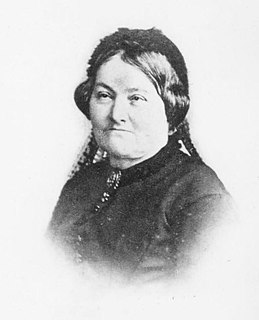 W
WJulie von May , was a Swiss feminist. In 1868, she became the chairperson of the first women's organisation in Switzerland: Association Internationale des Femmes. She supported women suffrage, but focused on equality before the law. She has been counted as perhaps the leading feminist of her country in her generation alongside Marie Goegg-Pouchoulin.
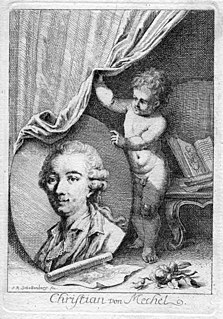 W
WChristian von Mechel was a Swiss engraver, publisher and art dealer. He developed a broad trade in art, through business connections throughout northern and central Europe; although the French Revolutionary Wars ruined him financially, he started over in 1805 in Berlin.
 W
WHeinrich Menu von Minutoli was a Prussian Generalmajor, explorer and archaeologist.
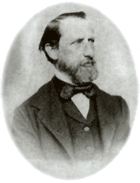 W
WHenri Nestlé was a German-Swiss confectioner and the founder of Nestlé, the world's largest food and beverage company.
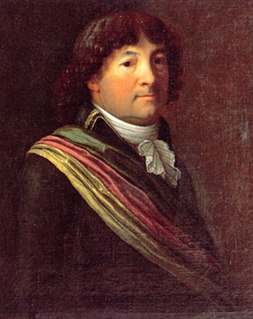 W
WPeter Ochs was a Swiss politician who is best known for drawing up the first constitution of the short-lived Helvetic Republic.
 W
WLouis Jean Odier was a Genevan and then Swiss physician, medical campaigner and advisor; he was also a translator and publisher of medical texts - particularly from the English language. He was a major figure in medicine in 18th-century Europe because of his promotion of vaccination against smallpox and more broadly his lobbying for medical funds and usage of data from historical medical records, relating them to probability in life expectancy and subsequent advice for economic planning.
 W
WAntonia de Oviedo Schöntal was a Swiss Roman Catholic professed religious and the co-founder of the Oblates of Holy Redeemer – an order that she established alongside the Benedictine Bishop José María Serra. She assumed the religious name of "Antonia María of Mercy" and worked alongside poor and disadvantaged women.
 W
WJosef Fridolin Vinzenz Aloys Reding von Biberegg was a Swiss patriot, military officer and politician. He is best known for leading an early revolt against the Helvetic Republic.
 W
WAnna Maria Rüttimann-Meyer von Schauensee was a politically influential Swiss salonist during the Helvetian Republic. She was married to Vinzenz Rüttimann from 1794 and corresponded with Paul Usteri from 1799.
 W
WAnna Maria Katherina Scherer was a Swiss Roman Catholic professed religious and the co-founder of the Sisters of Mercy of the Holy Cross. She founded that order alongside the Capuchin priest Theodosius Florentini. She was given the name of "Maria Theresia" upon her profession into her order.
 W
WRoland Heinrich Scholl was a Swiss chemist who taught at various European universities. Among his most notable achievements are the synthesis of coronene, the co-development of the Bally-Scholl synthesis, and various discoveries about polycyclic aromatic hydrocarbons.
 W
WBarbara Schulthess, was a Swiss Salonnière. From 1772 onward, she hosted a literary salon in Zürich, which came to be regarded as the intellectual center of contemporary Zürich. She is known as the friend and correspondent of Johann Wolfgang von Goethe.
 W
WAnne Louise Germaine de Staël-Holstein, commonly known as Madame de Staël, was a woman of letters and political theorist of Genevan origin. She was a voice of moderation in the French Revolution and the Napoleonic era up to the French Restoration. She was present at the Estates General of 1789 and at the 1789 Declaration of the Rights of Man and of the Citizen. Her intellectual collaboration with Benjamin Constant between 1794 and 1810 made them one of the most celebrated intellectual couples of their time. She discovered sooner than others the tyrannical character and designs of Napoleon. For many years she lived as an exile – firstly during the Reign of Terror and later due to personal persecution by Napoleon.
 W
WFrederick Sutermeister was a Swiss theologian and pastor.
 W
WCarl Brunner von Wattenwyl was a Swiss entomologist who specialised in Orthoptera, and a botanist.
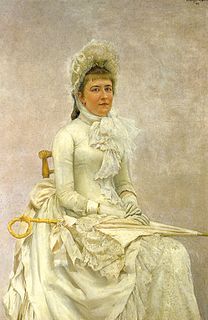 W
WLydia Welti Escher, was a Swiss patron of the arts and the daughter of Augusta Escher-Uebel (1838–1864) and Alfred Escher (1819–1882), among others the founder of the Gotthardbahn. Lydia Escher was one of the richest women of Switzerland in the 19th century, patron of the arts and established the Gottfried Keller Foundation.